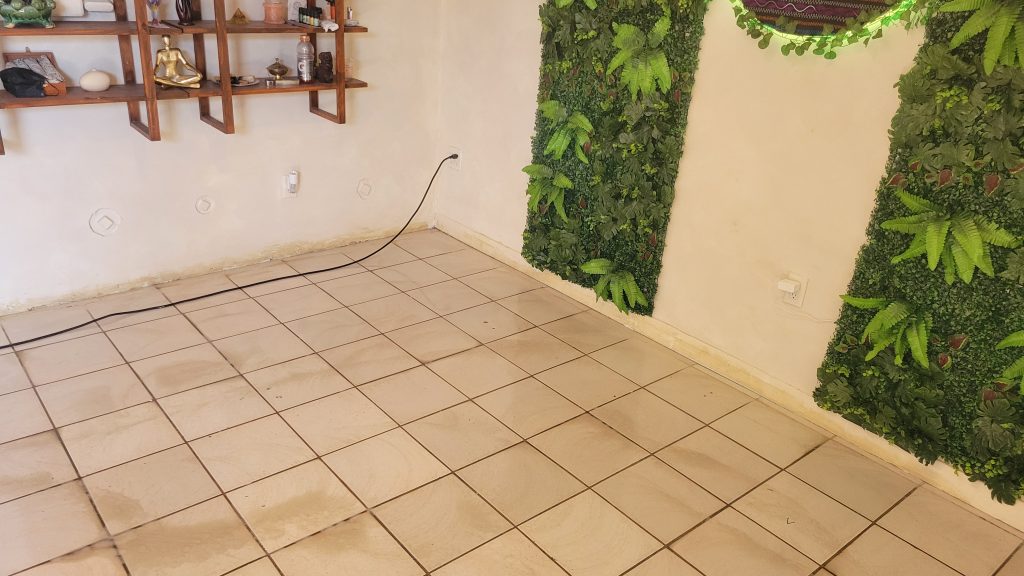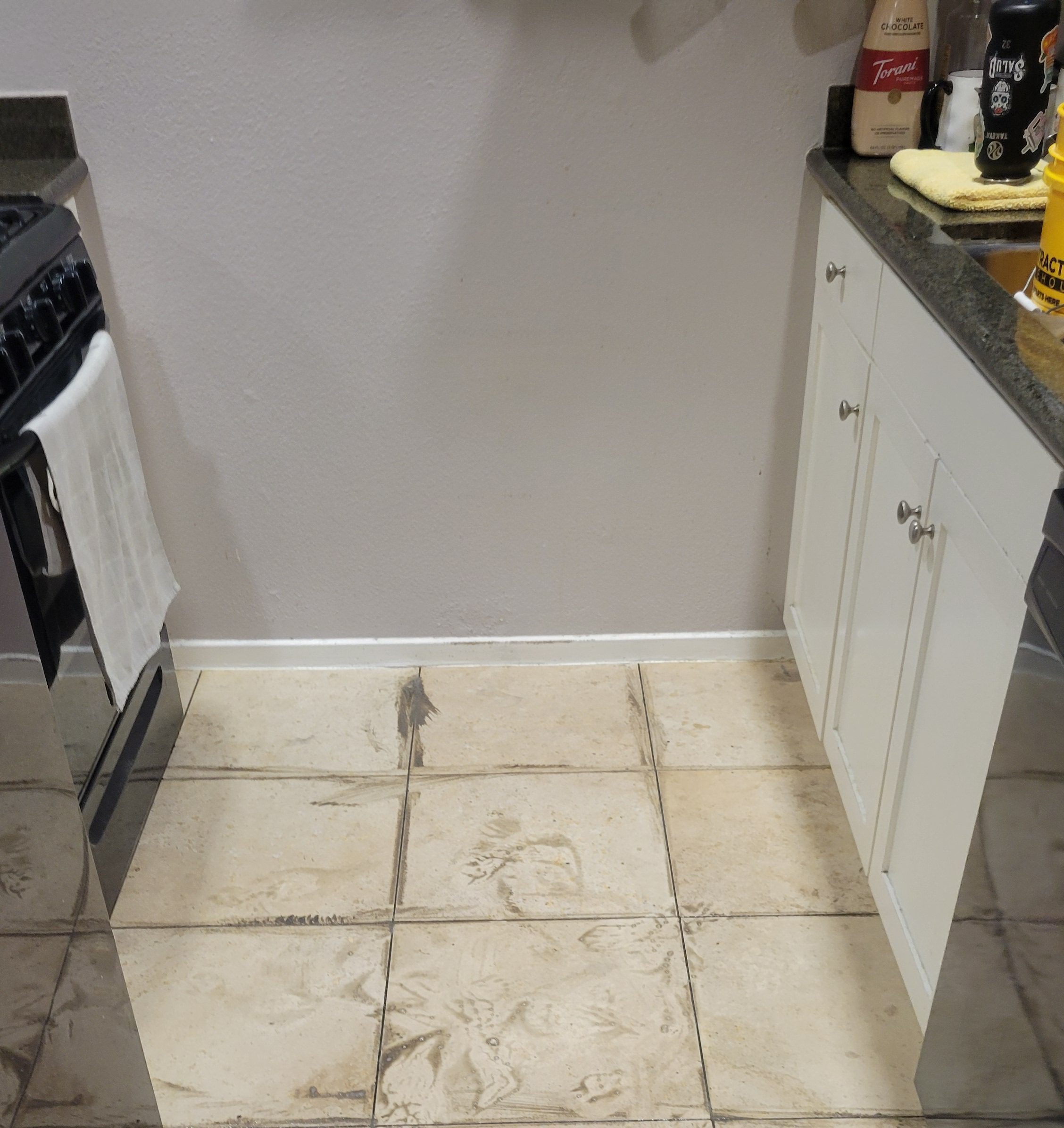Grout bleeding can be a frustrating problem for homeowners who take pride in maintaining clean floors and surfaces. Just as you might seek out the best carpet cleaning services in Los Angeles to maintain your carpets, understanding what causes black grout to bleed during cleaning is key to preserving your tile work. This discoloration typically stems from several factors, including improper cleaning solutions, excess moisture, inadequate sealing, aging materials, aggressive scrubbing, and poor-quality grout. By identifying these causes and implementing proper care techniques, you can maintain clean, attractive grout lines that enhance rather than detract from your tiled surfaces.
Incorrect Cleaning Solutions
Using harsh chemicals can often lead to black grout bleeding during cleaning, which causes discoloration and damage to the grout lines. To prevent this issue, avoid using acidic or alkaline cleaners on grout, as they can break down the grout’s structure, leading to bleeding. Instead, opt for pH-neutral cleaners specifically designed for grout cleaning. These cleaners are gentle yet effective at removing dirt and stains without compromising the integrity of the grout. When cleaning with the appropriate solution, ensure proper dilution, as using cleaners that are too concentrated can also contribute to grout bleeding. By selecting the right cleaning products and following proper dilution guidelines, you can maintain the cleanliness and appearance of your grout effectively.
Excessive Water Usage
To prevent black grout bleeding when cleaning, avoid using excessive amounts of water, as it can lead to saturation and compromise the integrity of the grout lines. When too much water is applied during the cleaning process, the grout absorbs it beyond its capacity, causing it to weaken and potentially discolor. Excessive water can break down the grout’s structure, making it more prone to staining and promoting the growth of mold and mildew. Beyond structural concerns, the pressure from too much water can push the grout out of place, creating uneven lines and gaps. Control the amount of water used, ensuring that the grout remains dry enough to maintain its strength and appearance.
Poor Grout Sealing
Improperly sealing grout can greatly contribute to black grout bleeding issues during cleaning. When grout is not adequately sealed, it becomes more porous, allowing dirt, grime, and moisture to penetrate deeper into the material. This penetration leads to discoloration and the appearance of black bleeding when cleaning. To avoid this problem, ensure that the grout is properly sealed with a high-quality sealant after installation. The sealant acts as a protective barrier, preventing substances from seeping into the grout and causing staining. Regularly inspect the sealed grout for any signs of wear or damage, and reapply sealant as needed to maintain its effectiveness. Proper sealing plays a critical role in preserving the appearance and longevity of your grout lines.
Aging Grout Lines
As grout lines age, they are more prone to deterioration and discoloration, which can contribute to black grout bleeding during cleaning. Over time, the grout material can break down due to exposure to moisture, cleaning agents, and general wear and tear. This breakdown weakens the grout’s structure, making it more susceptible to absorbing dirt, mold, and other contaminants. As grout ages, its coloring can fade or change, leading to uneven appearances between sections of grout. These variations in color can become more pronounced when cleaning, especially if the grout is not adequately sealed or maintained. Properly addressing aging grout lines through regular maintenance and timely repairs can help prevent or minimize the occurrence of black grout bleeding during cleaning sessions.
Harsh Scrubbing Techniques
Using overly aggressive scrubbing methods can exacerbate black grout bleeding issues when cleaning. Harsh scrubbing techniques, such as using abrasive tools like steel wool or hard-bristled brushes, can cause the grout to deteriorate and release its color pigments. When you scrub vigorously, especially on older grout lines, you risk wearing down the grout’s surface and pushing the pigments out, which can lead to black staining on your tiles. To prevent this problem, opt for gentler cleaning methods like soft brushes or sponges and mild cleaning solutions. Consider applying a sealant to the grout lines after cleaning to protect them from future damage due to harsh scrubbing.
Low-Quality Grout Materials
When choosing grout materials for your tiling projects, the quality of the grout plays a significant role in preventing black grout bleeding during cleaning processes. Low-quality grout materials can worsen the issue, leading to persistent problems. Porosity stands out as a major concern because low-quality grout is often more absorbent, allowing water and dirt to infiltrate deeply, which causes discoloration and bleeding. Adhesion also matters because weak adhesion of low-quality grout to tiles can lead to its deterioration and mixing with cleaning agents, resulting in black grout bleeding. Durability is another factor to consider, as substandard grout materials are less resilient, wear out quickly, and become more prone to staining and bleeding. Investing in high-quality grout materials from the start can save you considerable time and frustration in the long run.
Related Topics:




